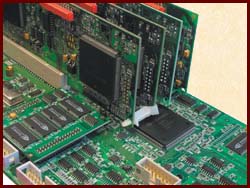FelixLowe
New member
Hear this version of All Things Bright and Beautiful with Royal Oak. I guess it is an Anglo-American organ again: http://www.youtube.com/watch?v=jXVURJ1lQ3Y.
The only criticism of the playing is that the organist leaves no breathing rest between the refrain and the verses. At least he should be "hands off" the manual during those little breaks, while keeping the pedal notes sustained if he wishes to produce a sense of continuity. But now everything in Royal Oak clumps together like a mess.
Perhaps, he tried to do this, thinking that since he was not actually supporting a congregation singing, but merely giving a demo, so he thus became a bit slack in maintaining proper diction.
The only criticism of the playing is that the organist leaves no breathing rest between the refrain and the verses. At least he should be "hands off" the manual during those little breaks, while keeping the pedal notes sustained if he wishes to produce a sense of continuity. But now everything in Royal Oak clumps together like a mess.
Perhaps, he tried to do this, thinking that since he was not actually supporting a congregation singing, but merely giving a demo, so he thus became a bit slack in maintaining proper diction.
Last edited:







